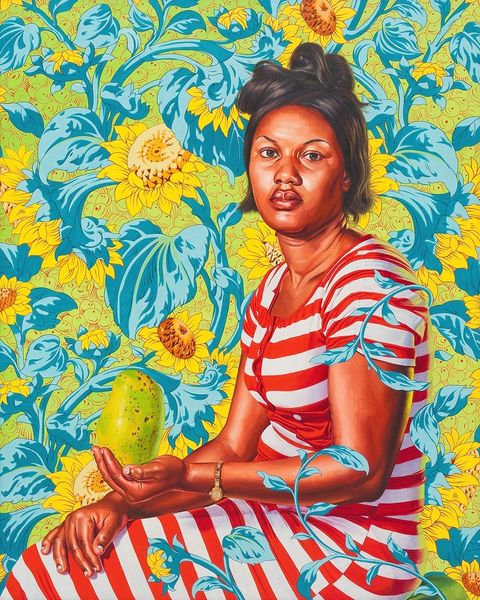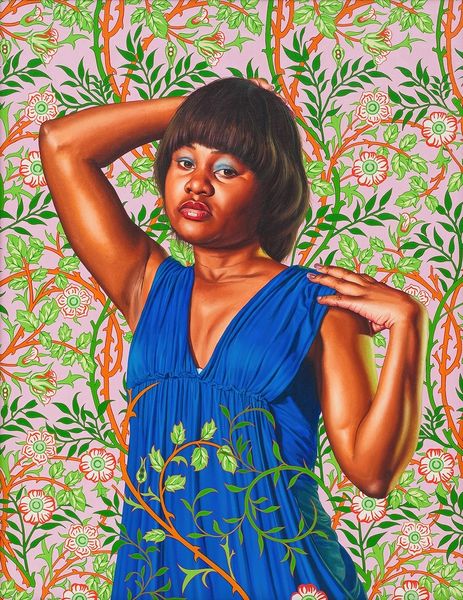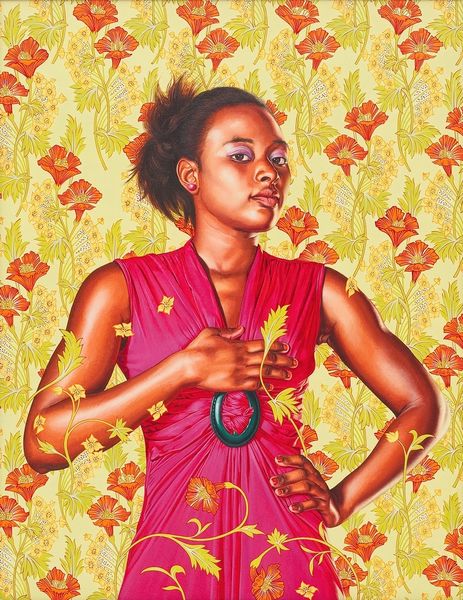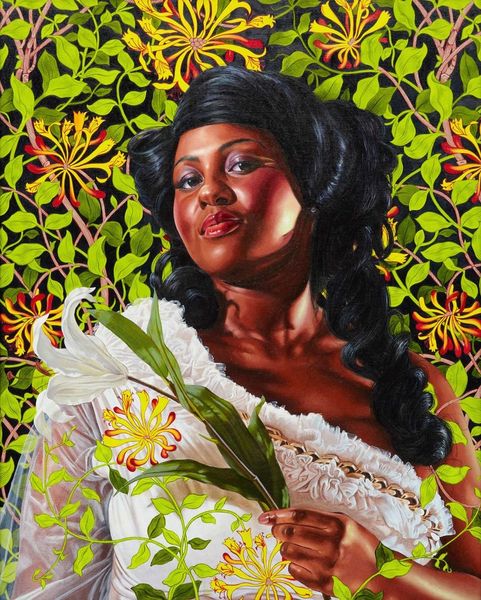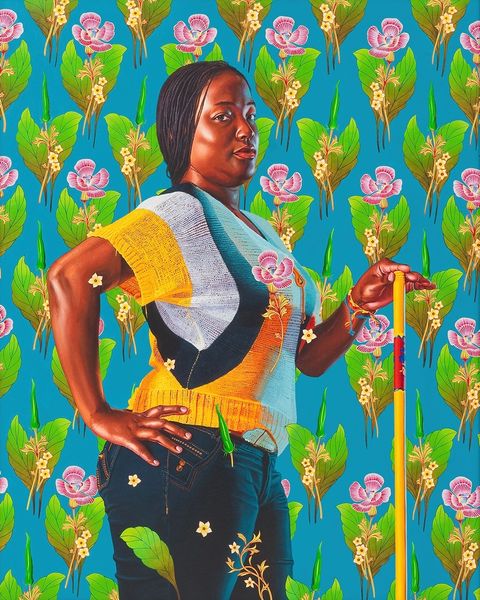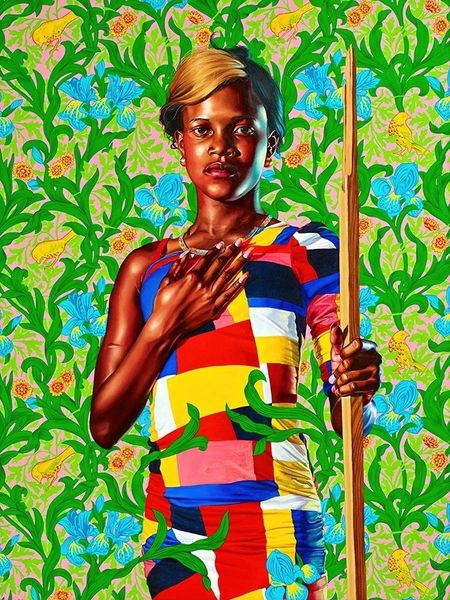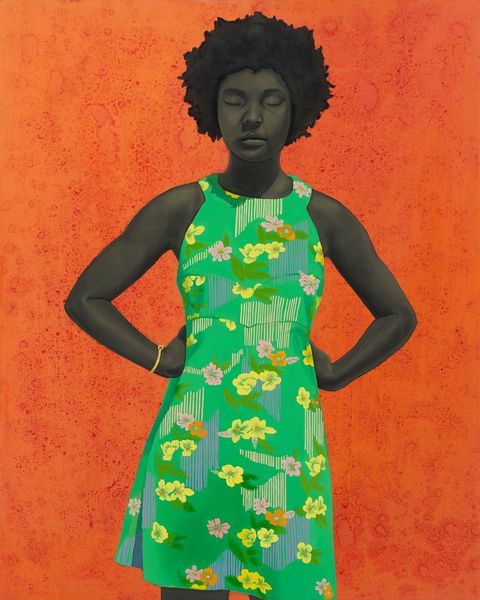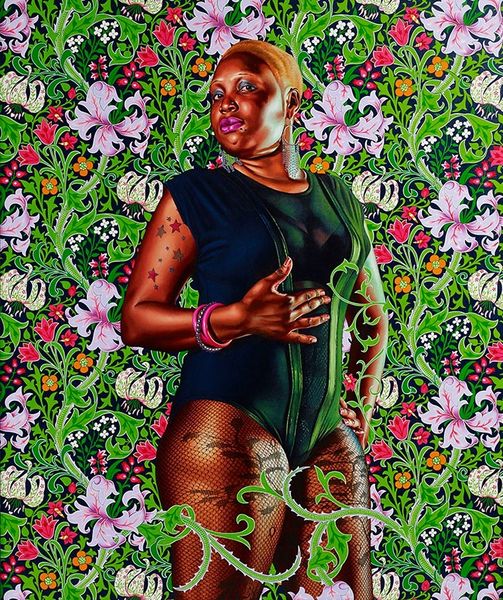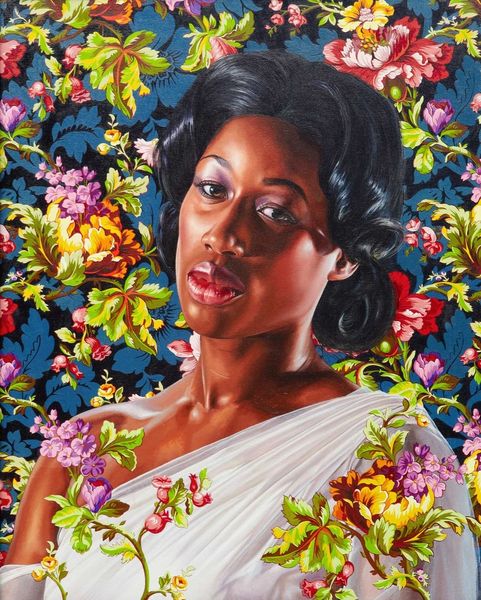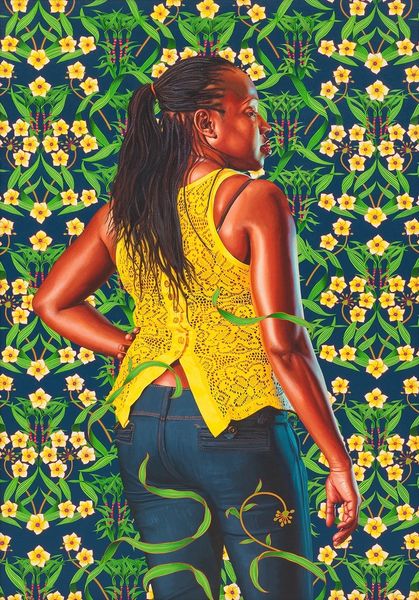
painting
#
portrait
#
pattern-and-decoration
#
contemporary
#
painting
#
pop art
#
figuration
Copyright: Modern Artists: Artvee
Curator: Immediately, I'm struck by the juxtaposition of power and vulnerability in this painting. There's something regal and also quite personal happening here. Editor: You're right, there's a compelling tension. We're looking at Kehinde Wiley's "Portrait Of Anne Cynthia Petit VII" completed in 2014, using acrylic paint. What Wiley achieves is quite potent, placing a contemporary figure within the historical framework of portraiture. Curator: Exactly. Wiley's strategy of depicting people of color in the poses of historical European figures disrupts centuries of art historical conventions. The background is a riot of floral pattern, almost overwhelming. But it also functions as a symbol. Editor: It feels like a symbolic garden, perhaps alluding to themes of cultivation, growth, and even hidden dangers. I notice how the botanical motifs are not merely decorative but almost predatory, their thorns curling around the figure. They are suggestive of a protective barrier. Curator: It echoes Wiley's frequent dialogue with colonial power structures, playing with ornamentation often associated with wealth and status, but recasting it on his own terms. Anne Cynthia Petit’s direct gaze meets ours. This asserts a strong sense of presence. How interesting that Wiley used a staff like this. In European portraits, staffs would denote power and governance, a literal symbol of support for the ruler. Editor: It also makes me consider the notion of identity. She's adorned with these potent symbols – the pearls, the commanding jumpsuit, the floral armor. This elevates Anne into almost an allegorical figure representing something larger. She becomes an archetype that explores the complexities of being seen, being represented. The way she holds the staff indicates power and the awareness of responsibility, not aggression. Curator: The scale of this portrait further emphasizes that assertion of power. Its monumental size commands the space around it, challenging the historical marginalization of Black figures in art. Wiley's art creates an open dialogue about who gets to be represented, celebrated, and remembered. It questions power, not through protest, but by actively taking space within an elite visual culture. Editor: Precisely. Thinking about how images become icons and the messages they send… Wiley reframes visual languages of dominance. He allows viewers to contemplate and ultimately renegotiate our understandings. Curator: An intriguing painting that manages to be both bombastic and surprisingly nuanced, creating ripples far beyond the canvas. Editor: Indeed. A bold reinterpretation of portraiture that insists on a new kind of visibility and remembrance.
Comments
No comments
Be the first to comment and join the conversation on the ultimate creative platform.
